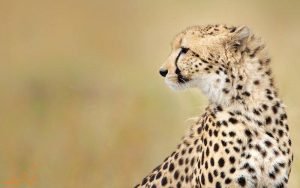
There are 1,300 species of animals in the country, 130 of which are endangered and threatened, Hassan Akbari, deputy head of natural environment and biodiversity of the Department of Environment (DOE), has said.
Asiatic cheetahs, great bustard, Siberian crane, Persian onager, and some reptiles and amphibians are among the endangered and threatened species, he said.
Significant smuggling and habitat destruction are the main threats to the species, and promoting a culture of kindness to the environment and strengthening social participation is one of the most important and effective strategies in protecting the environment, he further explained.
The availability of large quantities of weapons and ammunition to the poachers is another risk factor for wildlife populations, Akbari added.
Four types of areas, amounting to 309, have been designated for preservation and protection, including, national parks, wildlife refuges, protected areas, and natural national monuments. Currently, the supervised areas reached about 18.5 million hectares.
The strategy and priority of the DOE are to protect endangered species through preservation of natural habitats, but in some cases, it is necessary to pursue species reproduction in captivity or by species displacement,” he noted.
Some species of reptiles and amphibians, became extinct due to the lack of sufficient information about this species, he further lamented, IRNA reported on Saturday.
“Many articles have been published about the country’s biodiversity, which is scattered and attempts are being made to compile and use these researches by creating a database.
So, a database has been launched in the field of environmental research in order to improve the quality of nature protection,” he also stated.
Biological diversity protection
Iran has a high diversity of species due to geographical conditions, climatic diversity, huge water resources of the Caspian Sea in the north and the Persian Gulf, and the Sea of Oman in the south.
According to the latest studies, about 1,300 species of vertebrates, including mammals, birds, reptiles, amphibians, and aquatic fish, about 30,000 species of invertebrates, and 8,000 species of plants have been identified in the country.
Unfortunately, over the past two decades, human activities have led to alarming degradation of ecosystems, deletion of genes, species, and biological capabilities; Human threats to biodiversity have accelerated the most over the past 50 years over the entire history of human life.
According to the United Nations, three-quarters of the Earth’s environment and about 66 percent of the marine environment have been altered by human activities, and the latest report by the Intergovernmental Science-Policy Platform on Biodiversity and Ecosystem Services (IPBES) states that more than one million species of animals and plants are in danger of extinction.
Therefore, any planning and action in the direction of optimal and principled management of biodiversity protection in the country, interaction and continuous cooperation of responsible bodies, and benefiting from international opportunities and their financial and professional resources can play a very important and key role in maintaining biological diversity alongside sustainable development.
We hope that with the common determination of officials and policymakers, the people, the media, and environmental activists, will preserve and protect this valuable asset for future generations.
